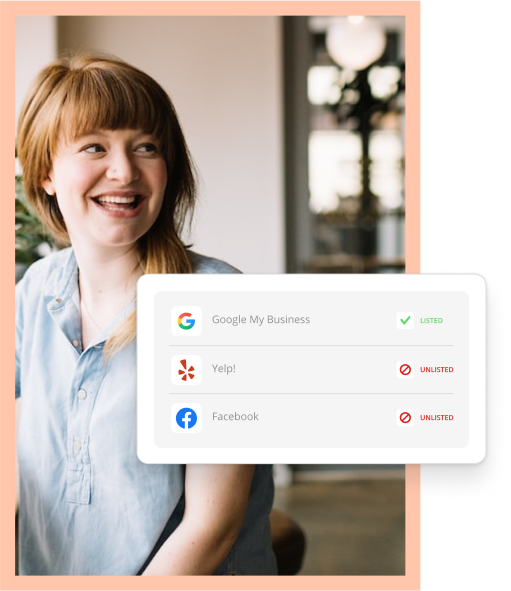Like it or not, big tech is intertwined into our everyday lives. You most likely found this blog via one of the many tech giants out there, such as Google or Meta (formerly Facebook).
The truth is massive technology conglomerates from Apple to Amazon hold a ton of power. One small change in an algorithm can cause waves in how small businesses communicate with customers or do business.
What Happens When We Rely on Big Tech?
Remember in October, when a data outage hit Meta (Facebook) and its family of apps, including Instagram, Whatsapp and Messenger? For hours, the social sites were down and it was more than memes people were missing out on. Thousands of small businesses were in the dark.
Some even lost out on hundreds to thousands of dollars in the process since they rely solely on Facebook for their business instead of a traditional website.
After about 6 hours, the platform was back up and running. But, this outage shines a light on a scary fact: Small operations heavily rely on these big tech giants to do business. And why not? For many, advertising on Facebook and Instagram has worked so well that some small businesses bypass having their own websites.
Big Tech Makes Major Changes
While we hopefully aren’t dealing with outages like this one often, tech companies like Meta and Google are continually making changes to their platforms. Surprisingly these updates can be almost as disruptive.
Some changes are simple tweaks to existing interfaces, like Instagram allowing everyone to use link stickers in Stories. Others are quite large.
Welcome to the Metaverse
In October, Facebook founder Mark Zuckerberg introduced Meta: A Social Technology Company. According to the companies initial statement, “Meta’s focus will be to bring the metaverse to life and help people connect, find communities and grow businesses.”
Along with the change, Meta rebranded Facebook for Business as Meta for Business. This resource focuses on ways small businesses can leverage Meta’s suite of technologies to explore the metaverse with AR and VR. But, what is the metaverse? Well, it’s virtual reality. In this digital space, you’ll be able to explore, connect with others as well as conduct and grow your business.
If the metaverse sounds like it’s out of a science fiction novel, that’s because it is. The term was coined back in 1992 by Neal Stephenson in his book “Snow Crash.” Now, we won’t all be living our lives virtually next year, according to the company, it’ll be here in about a decade and will provide opportunities for businesses both big and small.
One example of the future of virtual business included the possibility of immersive virtual shops and events.
Businesses shouldn’t be moving away from traditional online experiences just yet. While we wait for the metaverse to come to fruition, companies should continue to focus on the current tools they are using. According to Meta, these will be foundational to help grow your business in the metaverse in the future.
Amazon Boosting Small Businesses Ecommerce
Yes, you read that right. Announced just this week, retail giant Amazon Web Services is creating an opportunity for local small businesses to jump into ecommerce.
There’s a catch — this is a pilot program that is launching only in Pennsylvania. It is geared specifically to help residents shop with their local small businesses. This is certainly an altruistic move for AWS, which has long been blamed for the demise of small businesses everywhere.
The program will be hosted as an online marketplace where Keystone State small businesses will get the tech support they need to sell their products online. Through this searchable online directory, shoppers can determine things like location, product type and business ownership (minority-owned, LGBTQ-owned, etc.)
And in another not-so-Amazon-like move, the service, set to launch in early 2022, is free for both the shoppers and the small businesses. Wonder what those Prime benefits are going to look like.
Google Rebrands “Google My Business”
Also using a name change, “Google my Business” is now “Google Business Profile.” In addition, the corresponding apps for iOS and Android are being phased out in 2022. Rather, Google says small businesses should claim and manage their listing directly from Search or Maps.
New features include:
- Call History. Allows businesses to track calls when potential customers use the “call” button on their profile. Calls are kept in the “Calls” tab for 45 days.
- Messaging. Businesses can now message with customers’ directory from search and maps.
The existing Google My Business web platform will transition to support larger businesses that have multiple locations. This will be named “Business Profile Manager.”
With all the changes happening across Google it can be a little overwhelming. Thryv users can breathe easy with the new Google Optimization that makes claiming and managing your listing easy and stress-free.
What’s Next For Big Tech?
With Antitrust laws and a potential break up of some of the biggest players, we can expect changes to continue to happen across the digital economy. While there are pros and cons to this type of legislation, it’s important to note that the digital landscape is interconnected. So, it’s important to understand how your small business fits into the bigger digital picture.








